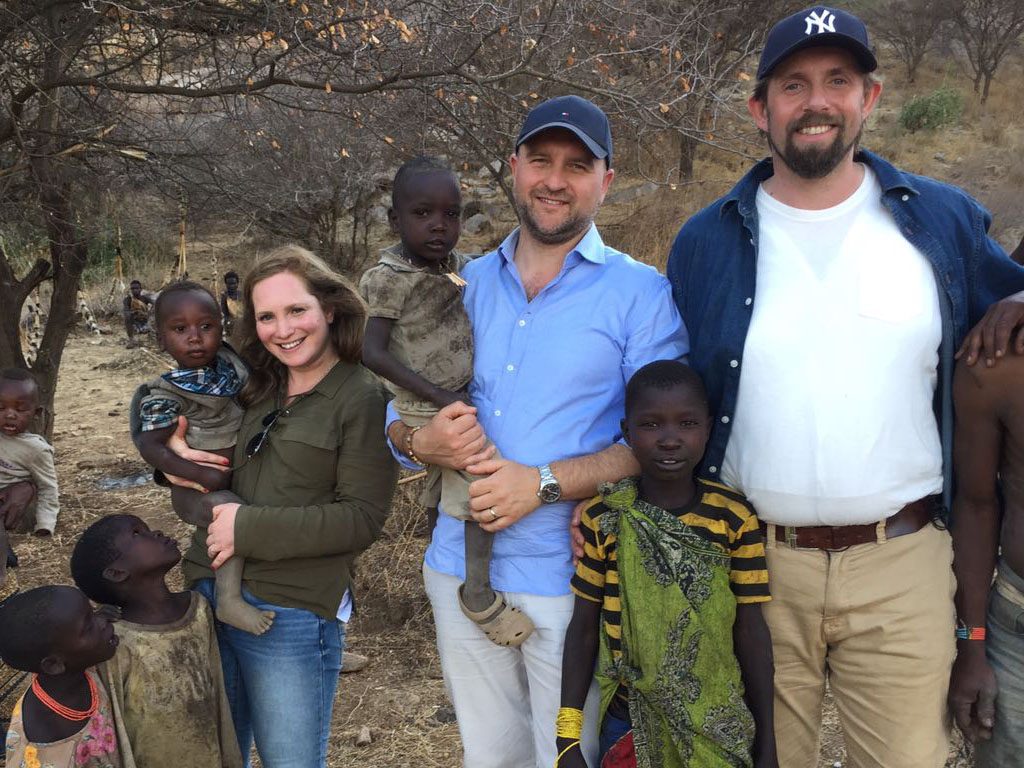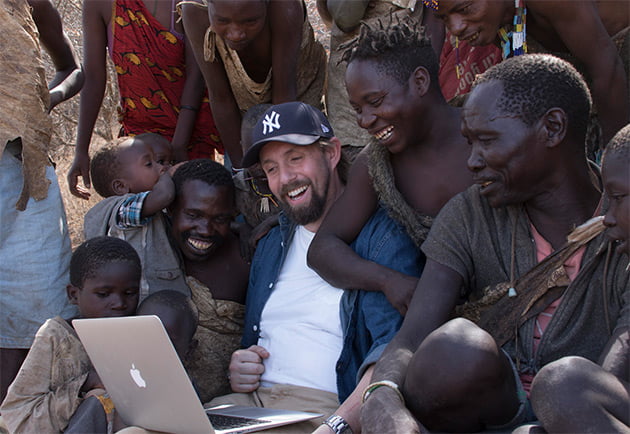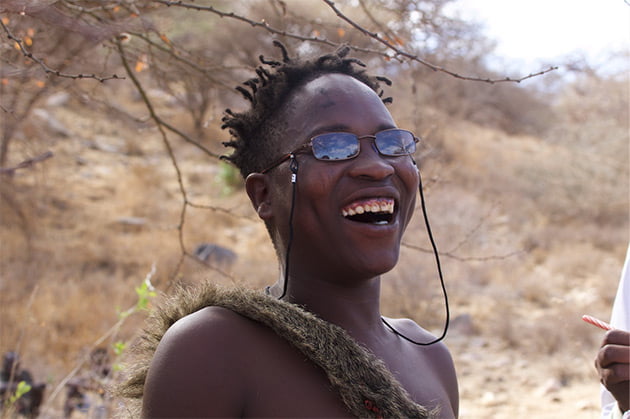To children, animation is a universal language. Put a child in front of a cartoon in Chinese or French, and they somehow still manage to get the message and giggle at the gags.
So why is animation such a powerful tool? Are we brought up to love cartoons through countless hours of watching Saturday morning TV, or is it truly a universal language that everyone can instinctively relate to? To answer those questions, one would need to show a cartoon to someone who had never seen one before and observe the effects. But where in this day and age can you find a person who didn’t grow up watching the likes of Mickey Mouse, Bugs Bunny or Dora the Explorer?
A delegation from PowToon, the creator of software that lets anyone create their own animated videos and presentations, recently traveled to a remote African tribe in Tanzania to introduce the locals to animation for the very first time.
PowToon CEO Ilya Spitalnik, COO Daniel Zaturansky and Marketing Manager Talia Finn-Jakar, met the Hadzabe Tribe, who are technologically isolated and have never seen cartoons before.
SEE ALSO: Spreading Israeli Tech Throughout Africa, Sivan Ya’ari Transforms The Lives Of Millions
Animation & laughter: Universal languages
“From the first moment we opened PowToon, and they saw cartoons for the first time, the entire tribe was in fits of laughter,” Spitlanik wrote on the company’s blog. “It turned out that I was now their designated entertainer and stand up comedian. I made a Powtoon about a Hadza man making fire in the middle of the screen. One of the members of the tribe pointed out that the fire was burning the man’s legs. In response, I made the fire huge! This was met with raucous laughter from everyone. We were literally rolling on the ground laughing. The adults were cracking up, and the children wanted to know how they could get inside the screen. The connection was instantaneous, the laughter was infectious. Even though the members of this tribe did not grow up with Saturday morning cartoons – they immediately connected to this form of art.”
After making another Powtoon about the tribe’s coming of age ritual, Akko, one of the younger members of the tribe, wanted to try PowToon out for himself. He had seen Spitalnik use the touchpad to move the mouse on the screen and copied his movements. “The gentleness with which he manipulated the touchpad on my Macbook was extraordinary,” Spitalnik wrote. “He was adding assets to the stage, and created a scene where a Hadza girl is picking berries, and a hunter shoots arrows at a target. In the final scene, Hadza children are waving goodbye to us.”
“We were way beyond the scope of our mission,” Spitalnik wrote. “We only really wanted to see if cartoons would resonate with people who didn’t grow up with them. But this was truly incredible! Forget about watching animation, here was someone who had never seen a computer in his life, creating a Powtoon within minutes.”
Biggest medical need: Eye doctors
The PowToon team also learned that the main medical ailment afflicting the tribe is that many of them have sensitive eyes due to the dust and lack of clean water. The visitors requested if they could bring doctors to the tribe to treat them. Fortunately, the bonding experience they just had with the tribe helped build enough trust to allow the team to bring in much-needed medical aid to the tribe in the form of local eye doctors.
Sign up for our free weekly newsletter
SubscribeAlthough reluctant at first, slowly, individual tribe members allowed the doctors to treat them. When the doctors examined Akko, they noticed that he had some scarring and a damaged cornea. He had scratched his cornea on a branch on one of his hunting trips and was now unable to see well, especially in daylight. Within minutes, the doctors had treated him, prescribed glasses and ointments, and Akko’s face lit up. “I can see! I can see! I’m going to be the best hunter that ever lived!!” he exclaimed.
By the end of the day, many Hadza were walking around with glasses and eye medicine.
As a result of their emotional experience, PowToon has committed to continue to care for the needs of the Hadza tribe by working with local doctors to deliver ongoing medical care and food.
Anyone can create an animated video
Launched in 2012 by co-founders Spitalnik and Zaturansky, PowToon’s mission is to make it possible for everyone to feel like an animator by creating simple animated videos. In just four years, over 34 million Powtoons have been created for use in business presentations, product launches, digital and broadcast ads, education materials for the classroom, explainer videos, and much more. According to the company, over 11 million global users, including major companies, small and medium businesses and and leading universities, use PowToon.
SEE ALSO: Israeli Technologies Transform Africa, Save Lives
The power of laughter
“It’s safe to say that when we started this journey it was a crazy idea and we truly didn’t know what to expect,” PowToon’s Founder & CEO Spitalnik said in a statement about their African adventure. “Our time together with the Hadzabe was truly unforgettable. It’s difficult to put into words how humbled we felt by their warmth and hospitality.”
“We accomplished what we set out to do,” Spitalnik said in a statement. “We proved that cartoons are a fundamental form of communication, instinctively understood by everyone across boundaries, borders, and cultures, regardless of whether you grew up watching Mickey Mouse or not. But beyond that, we learned that no matter how far apart we might be from one another geographically, people are all connected, and the power of laughter and a little open-mindedness can bring us all together.”

The PowToon Team (left to right: Talia Finn-Jakar, COO & Co-Founder Daniel Zaturansky, and CEO & Co-Founder Ilya Spitalnik) with some of the Hadzabe children. Courtesy
Videos and photos: Powtoon
Related posts

Editors’ & Readers’ Choice: 10 Favorite NoCamels Articles

Forward Facing: What Does The Future Hold For Israeli High-Tech?

Impact Innovation: Israeli Startups That Could Shape Our Future





Facebook comments